Film name : Char Bangla
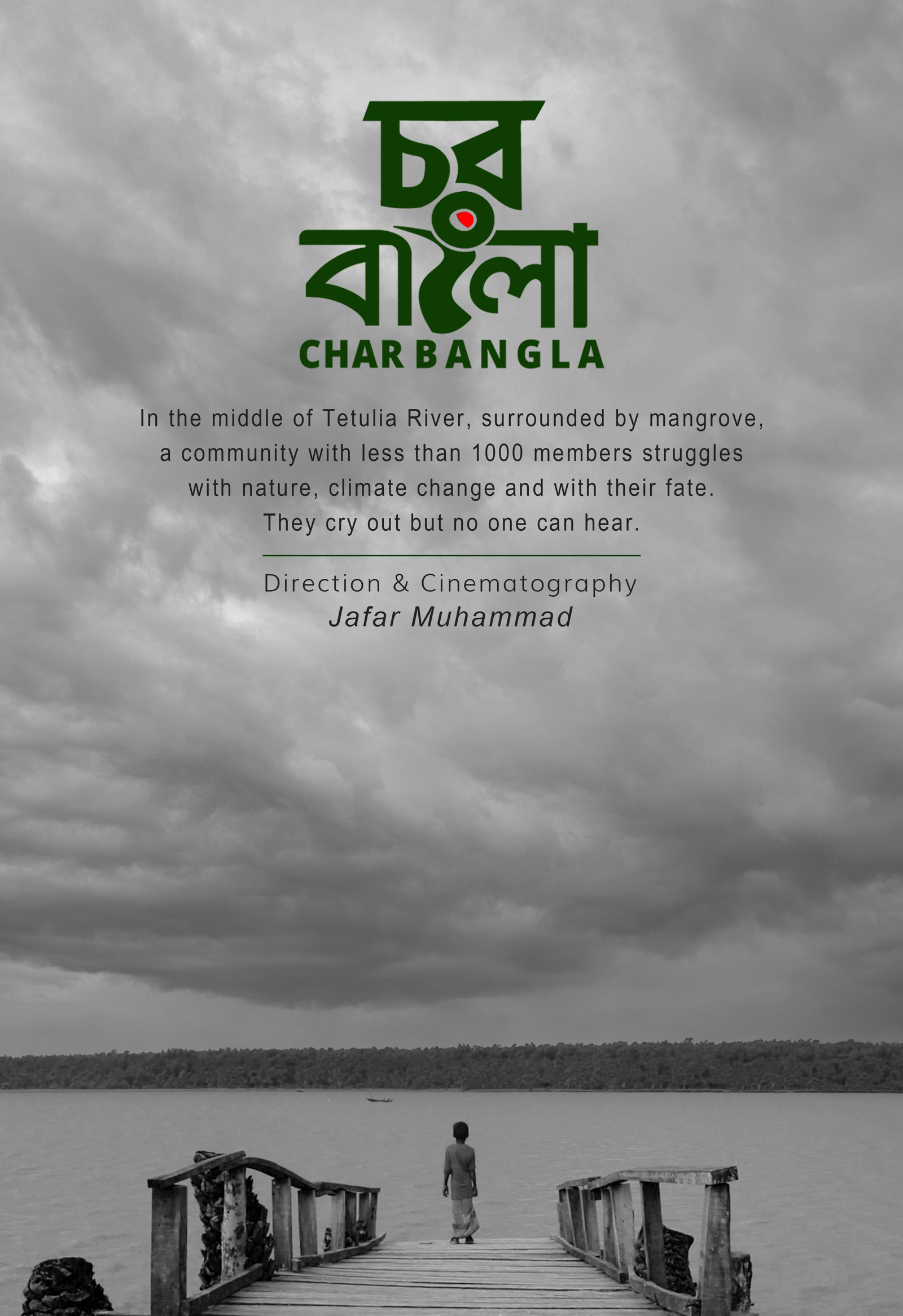
Char Bangla
Synopsis:
300 families of landless people live in a remote pasture of the Tetulia River in Patuakhali. An unbreakable connection with nature but when that nature takes the form of Rudramurti, a terrible disaster comes down in their lives. After Cyclone Rimal Char Bangla documentary film is based on the struggle of the people of Char Bengal
Film name : Bihongo Puran
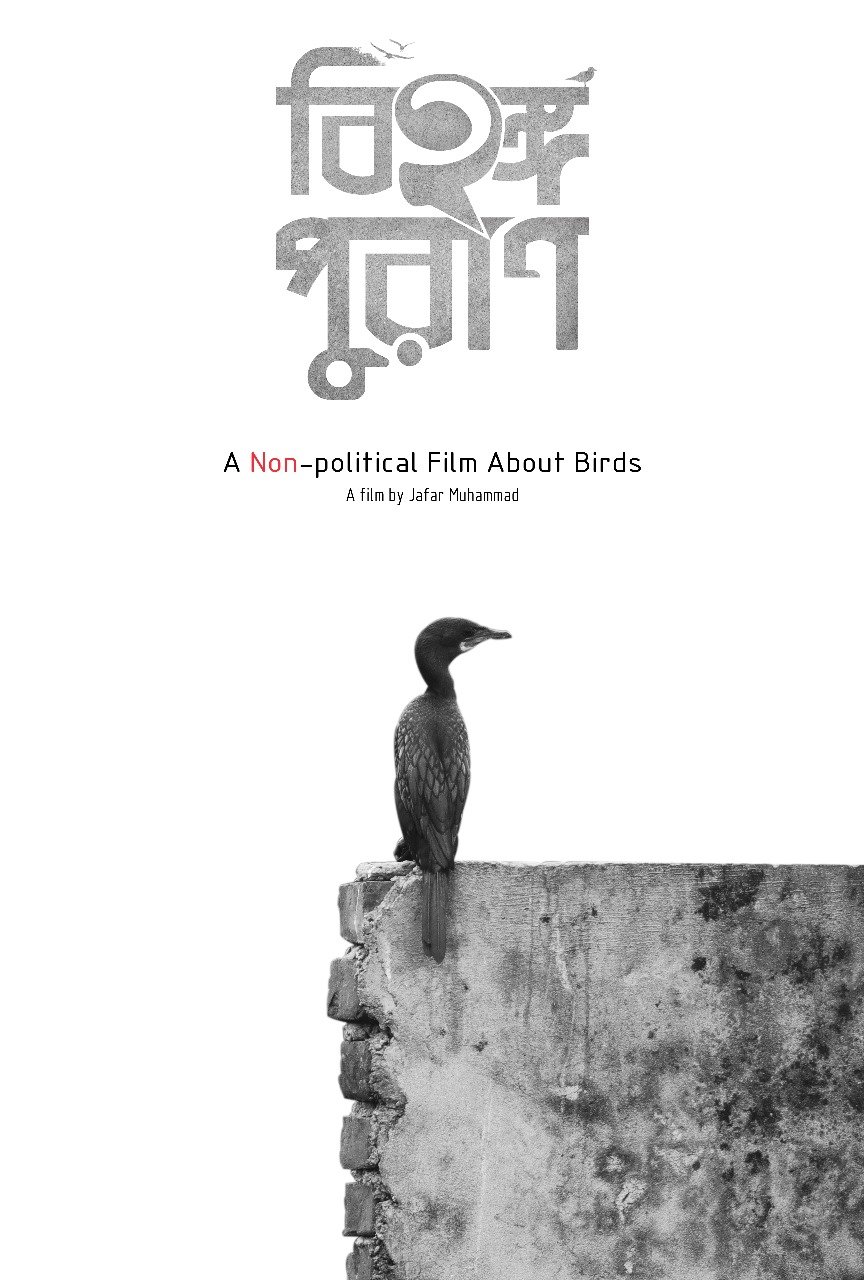
Bihanga Puran
Synopsis:
Birds are more lively then we humans. They eat, they drink, they sing, they dance, they fight, they struggle and they Love. They lived on the same planet from before we humans came. Human civilization created a bizarre situation for the non-human existence on this planet. Nowadays in the name of development we are destroying everything. We are cutting trees, cutting mountains and hills, filling the water body. But do we ever think other species are also owners of this planet! They also have the right on this land.The thing Is we never tried to listen to their voices. We never tried to understand them.
Film name : Pankouri

Pankouri
Synopsis:
Pankauri documents the lives of pebble collectors in northern Bangladesh, centering on Mujibur Rahman, who labored in the Karatoa River for 56 years and died at 66 from work‑related health issues; the film exposes the harsh physical toll, economic precarity, and absence of labor rights in this invisible trade, and calls for official recognition, healthcare, and protections for these workers to ensure a fair, sustainable future.
Film name : Poetry of Dystopia
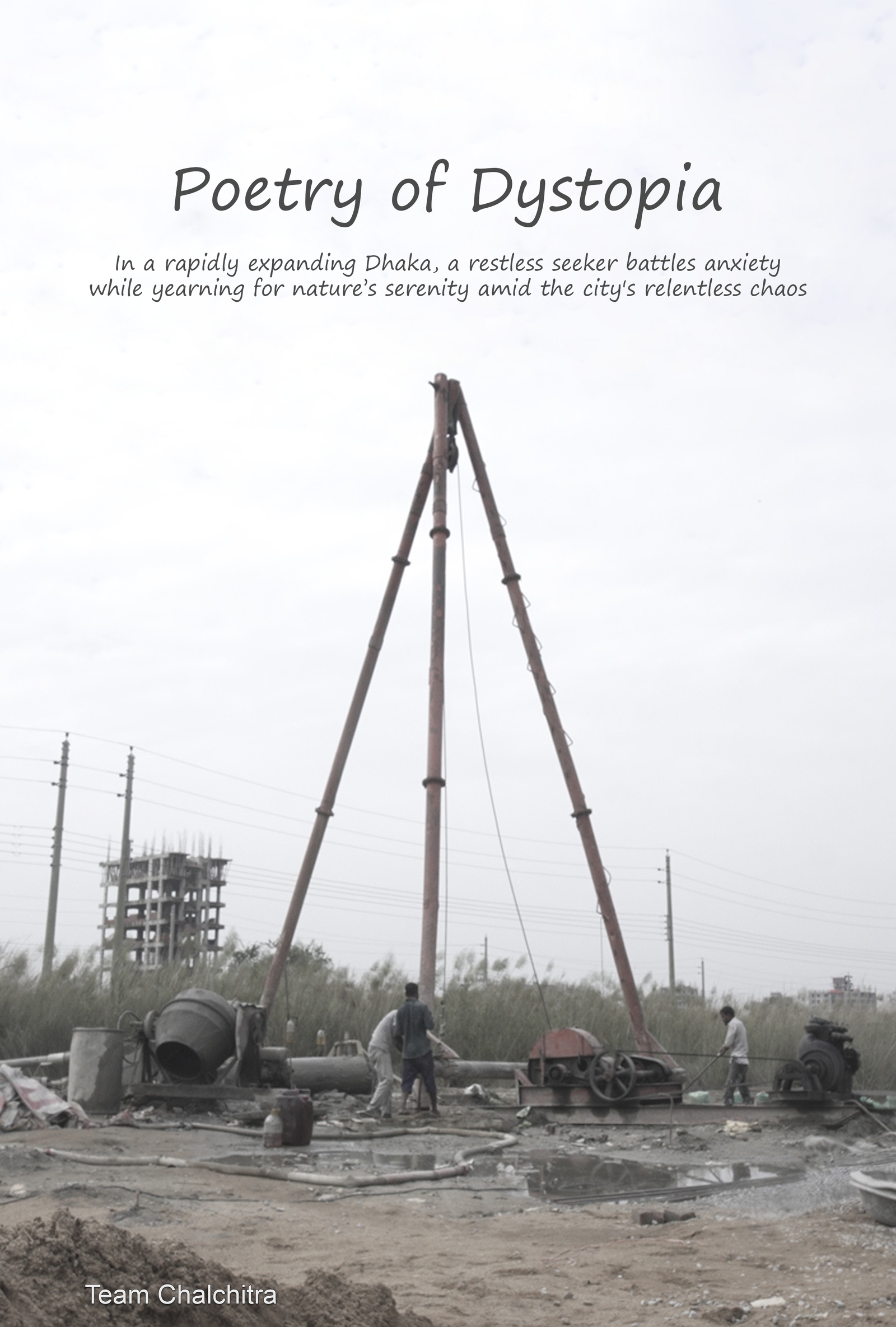
Poetry Of Dystopia
Synopsis:
Poetry of Dystopia follows a restless seeker in rapidly expanding Dhaka who is overwhelmed by the city’s noise, speed, and disorder while longing for the calm of nature. As construction sites rise and open spaces vanish, the character wanders through half‑built margins and industrial edges, confronting anxiety, sleeplessness, and a growing sense of alienation. The film weaves observational cityscapes with intimate fragments of memory and sound, turning Dhaka’s relentless sprawl into a mirror of the protagonist’s inner turmoil. In searching for a patch of sky and stillness, the seeker discovers that peace is fragile but possible—found in fleeting pockets of nature that defy the city’s encroaching chaos.
Film name : FArakka long march
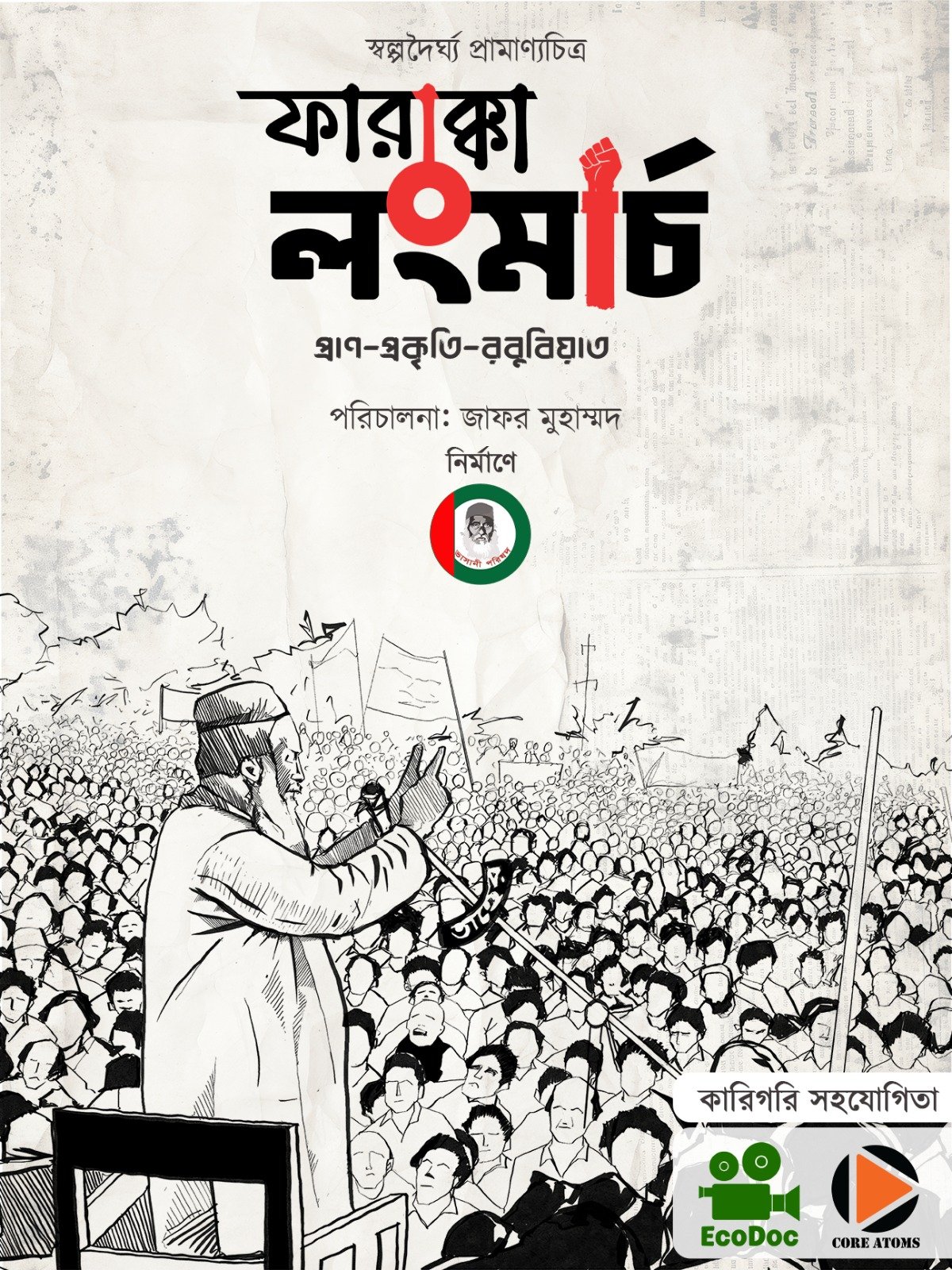
Farakka Long March
Synopsis:
Set against the backdrop of Bangladesh’s riverine landscape, Farakka Long March chronicles the historic 1976 protest led by the indomitable Maulana Bhashani against India’s Farakka Barrage, which disrupted the flow of the Ganges River. Born on the banks of the Yamuna, the 96-year-old Maulana, despite frail health, mobilized nearly 300,000 people to demand their natural right to water. The film explores how the collision of intercontinental plates 50 million years ago birthed the Himalayas and Bangladesh’s delta, shaping a land where rivers sustain life, biodiversity, and livelihoods. It delves into Bhashani’s visionary environmental politics, emphasizing his call for humanity to act as stewards of nature, ensuring the Earth remains habitable for all living beings. As the unresolved water crisis and ecological devastation persist, the film underscores the enduring relevance of Bhashani’s philosophy, weaving a powerful narrative of resistance, nature, and humanity’s interconnectedness.
Film name : Don’t panic! organize
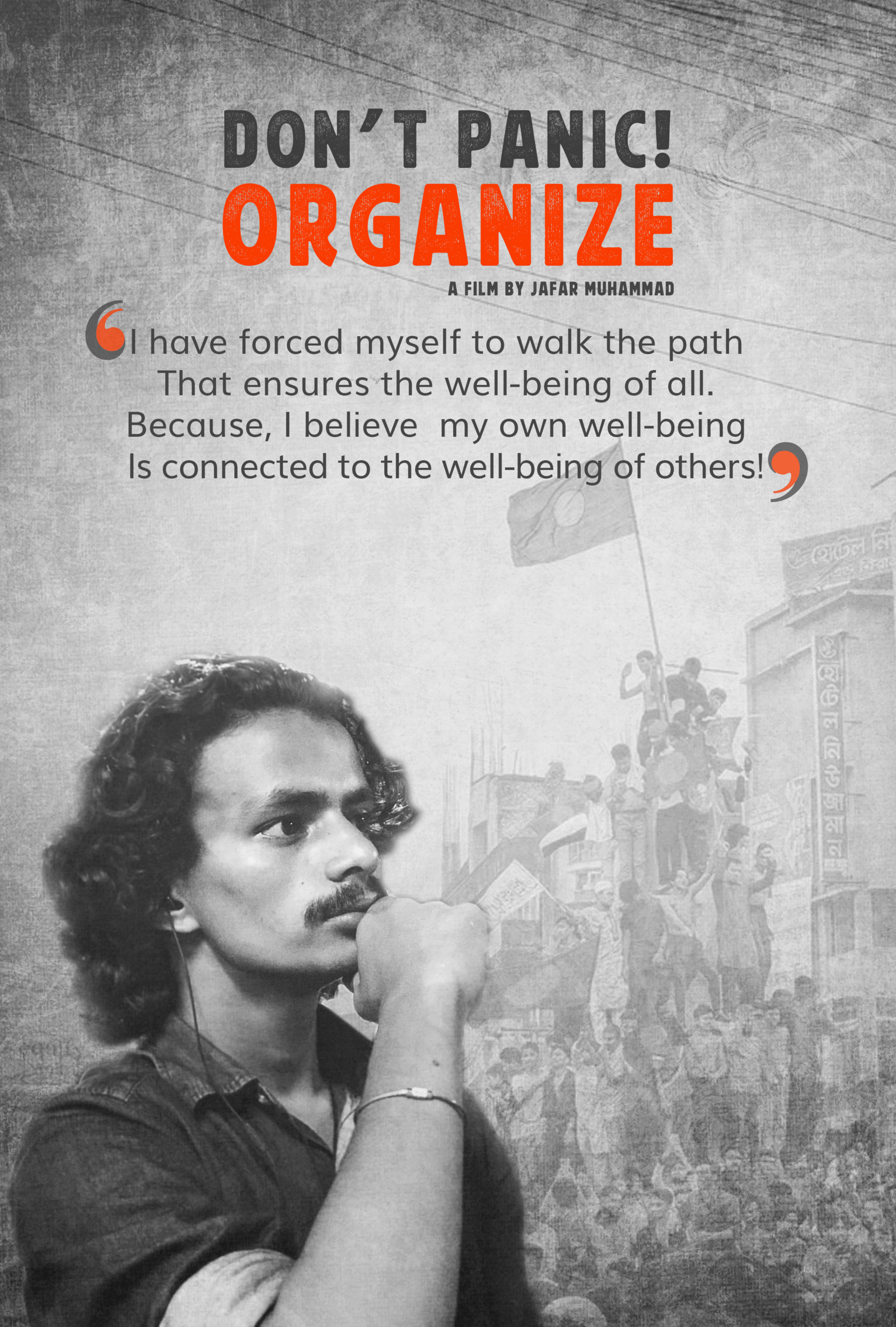
Don't Panic! Organize
Synopsis:
When escalating unrest and everyday precarity push his community toward despair, a thoughtful but untested organizer refuses to retreat into isolation, convinced that individual well‑being is bound to the welfare of others. Guided by street‑level conversations, strike rooms, and late‑night debates, he learns the craft of organizing—listening before leading, building trust across differences, and transforming anger into disciplined action. As authorities tighten surveillance and tensions flare, small wins stack into a movement that reshapes his sense of purpose. The film blends archival echoes of past uprisings with present‑day portraits of workers, students, and neighbors, tracing how a single voice becomes a chorus. In choosing solidarity over panic, he discovers a path where courage is collective, power is practiced, and hope is organized.
